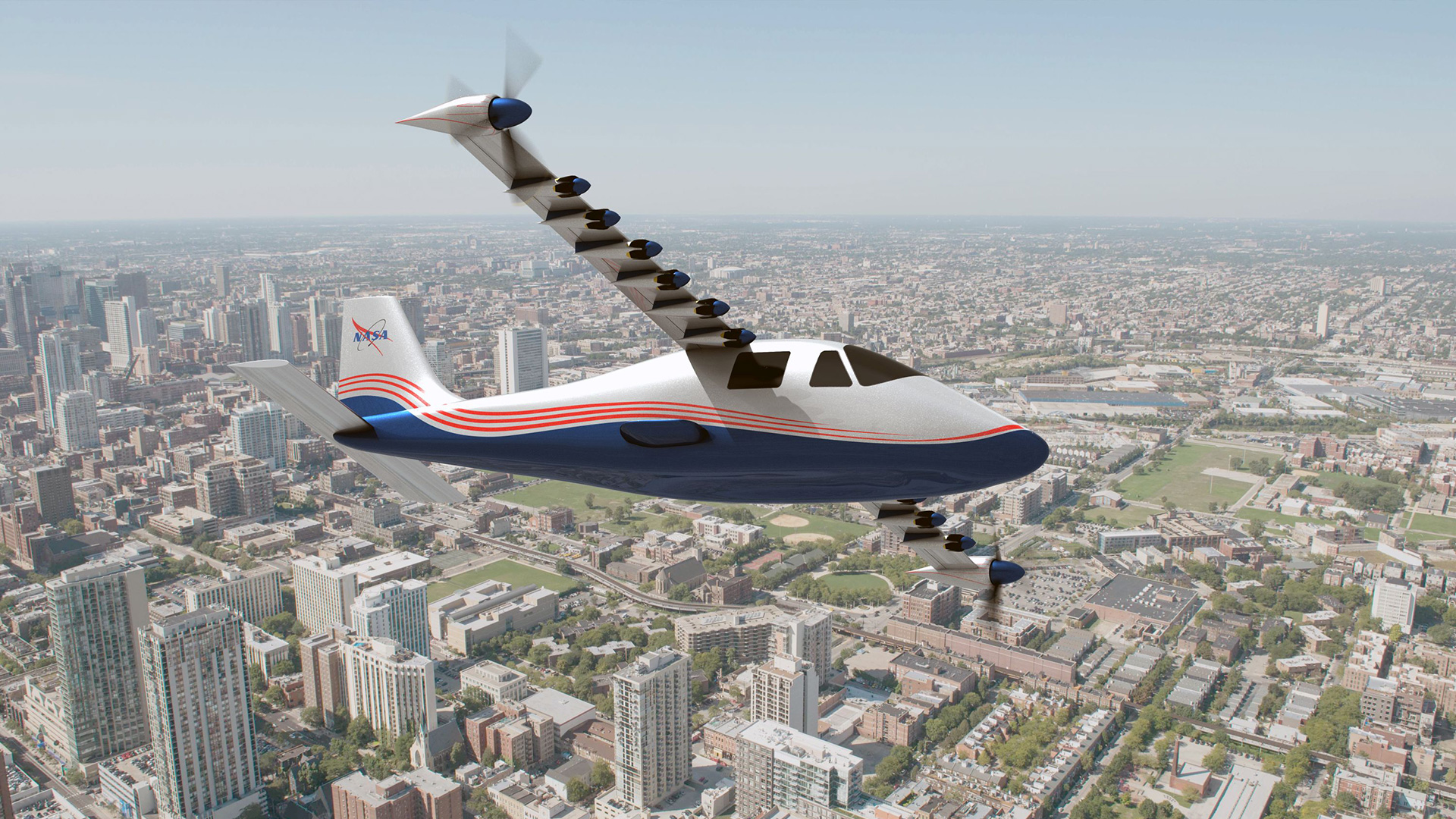

NASA’s long, storied line of groundbreaking experimental aircraft has a new family member: the X-57. It may not be as sexy as the Chuck Yeager-piloted X-1, as rapid as the hypersonic X-15, or as bizarre-looking as the X-29, but the X-57—which NASA has dubbed “Maxwell”—has just as much potential as any of them to redefine aviation. Because while those planes pushed the limits of speed or agility, Maxwell is designed to prove that electric propulsion is a viable means of moving passenger planes across the sky.
To do so, NASA has designed a plane that makes up for one of the traditional problems with electrically-powered manned flight—a lack of power—by piling on the motors. The X-57 boasts no fewer than 14 electric-powered propellers, scattered across its long, narrow, straight wing. The innermost dozen are designed only to be used during takeoff, when maximum acceleration is required; at cruising altitude, the twin outer motors will be enough to push Maxwell through the sky. And like a Tesla, the X-57 is entirely powered by batteries, so there’s far less risk of a massive explosion in the event of a crash.
The potential benefits of such an electrically-powered plane could be enormous. By spacing the propulsion units across the entire wing, NASA believes it can cut the amount of energy needed for a small plane to fly at 175 mph by a factor of five. Better yet, an electrically-powered plane of similar design could be efficient enough to negate the usual fuel penalty incurred by traveling at high speed that forces planes to cruise more slowly, allowing it to be faster from point to point than conventional prop planes. And since the electric motors are quieter than their piston-driven counterparts, the X-57 will likely be much more pleasing to the ear than conventional planes.
The X-57 is the first of several new X-planes planned as part of NASA’s New Aviation Horizons initiative, a 10-year project that seeks to find ways to improve aviation efficiency and safety. Unlike many experimental aircraft, Maxwell is based on a conventional aircraft design—in this case, a twin-engined Tecnam P2006T prop plane. Future planes in the program are expected to be larger, “transport-scale” aircraft—think C-130, not Cessna.
Oh, and that name, Maxwell? It’s in honor of James Clerk Maxwell, a 19th Century Scottish physicist who performed groundbreaking work in the field of electromagnetism. We bet you’ll need that for Jeopardy!one day.